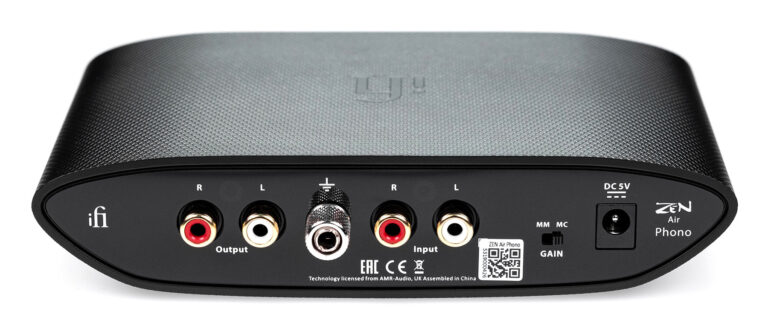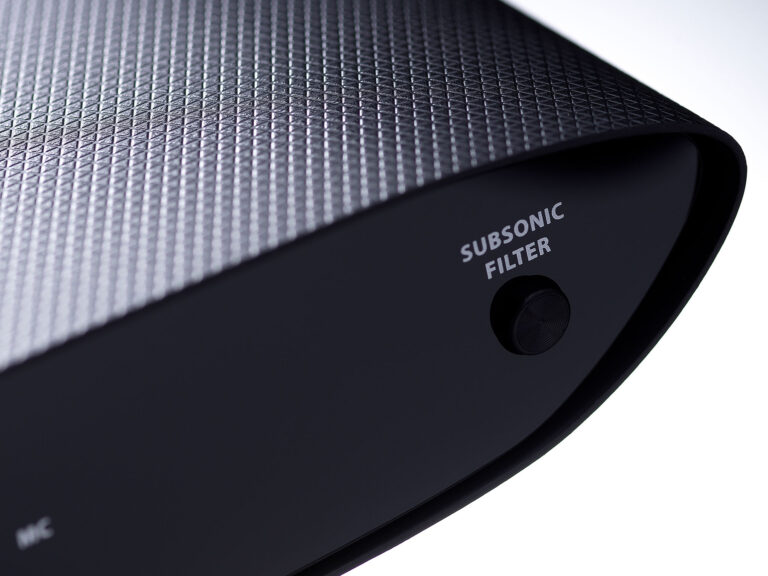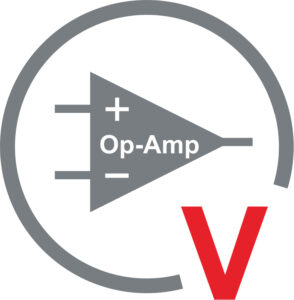ZEN Air Phono
Enjoy a purer listening experience with the ZEN Air Phono, our super affordable phono stage.
A phono stage, also called a phono pre-amp, provides the connection between the record cartridge/pickup (stylus) and the amplifier.
Turntable cartridges output a very small signal. This signal needs amplifying up to several hundred times the original size before it is loud enough for your amplifier. A phono stage increases the signal level from millivolts to volts.
When vinyl was the standard for audio recording, the phono stage was built-in to receivers and amps, allowing direct connection of a turntable. These days most receivers and amps do not contain a phono stage so a separate unit is needed.
It is a necessity for any turntable without a phono stage already built in. It will also upgrade a basic built-in phono stage in a turntable or amplifier system.

Purer still
Listening to music on vinyl is good for the soul. It sounds purer than listening to a track via your phone or computer.
Make this experience purer still by reducing hiss, noise and rumble on your records with the ZEN Air Phono.
MC and MM
There are two kinds of turntable cartridge – Moving Magnet and Moving Coil – and the ZEN Air Phono works with both of them.
- The MM setting is for cartridges with an output voltage of 2mV and higher.
- The MC setting for outputs less than 2mV.
You use the gain switch on the rear to change this setting.
It also has a precise RIAA equalisation setting to satisfy the most demanding vinyl lover.

Engage warp drive
As we all know, records can become warped with age. With the ZEN Air Phono any warp on your records will be driven away by our ‘subsonic filter’.
Normal subsonic filters remove ‘rumble’ AND bass and cause phase issues.
Our unique AI phono sub-sonic filter removes ‘rumble’ only.
There are basically two kinds of photo stage – MM and MC
MM = Moving Magnet cartridges. MC = Moving Coil cartridges.
On a MM cartridge, there is mounted a permanent magnet on the stylus cantilever. As the stylus traces the grooves, the magnet vibrates between two sets of fixed coils inside the cartridge. The moving (vibrating) magnet inside the fixed coils creates a tiny electromagnetic generator that produces the electrical music signal. The magnet move with the stylus.
On a MC cartridge, the coils are mounted on the stylus cantilever while the magnet is fixed. Here, the moving (vibrating) coils inside the fixed magnet form a tiny electromagnetic generator that produces the electrical music signal. The coils move with the stylus.
Tom Evans who makes very nice phono stages made the following astute comment:
A rumble filter simply adds to the bass cut making your already “cut” records sound bass light. Plus, it “time-steps” the bass in relation to the higher frequencies (where our hearing is most sensitive) so much so it can confuse the ear into believing the bass is playing out of tempo.
iFi’s solution:
Since the very first iPhono launched in 2012, we have used our own in-house ‘Subsonic Filter’. It’s last appearance was in the ZEN Phono and now the ZEN Air Phono.
Basically, it means warped records play as normal with no bass loss.
As there is only minimal vertical modulation remaining at very low frequencies with an an actual cut LP that is playable, we know that “vertical modulation” at low frequencies must be warp.
So we designed a filter to take advantage of this.
This is not artificial but real knowledge. By understanding fully how LPs are cut and replayed, it is possible to filter record warp strongly without at the same time attenuating low bass or adding group delay.
What is an EQ curve?
An EQ Curve is simply a preset equalizer that knows you are going to be missing certain frequencies…it then just adds them back in for you automatically.
At the introduction of the Long Play record (LP) in 1948, most record companies implemented their own particular equalisation curves and continued to experiment with equalisation in order to extract the best performance from the new medium. This led to a baffling array of different and incompatible equalisation curves being applied worldwide.
The most popular are RIAA, Columbia, and DECCA.






















